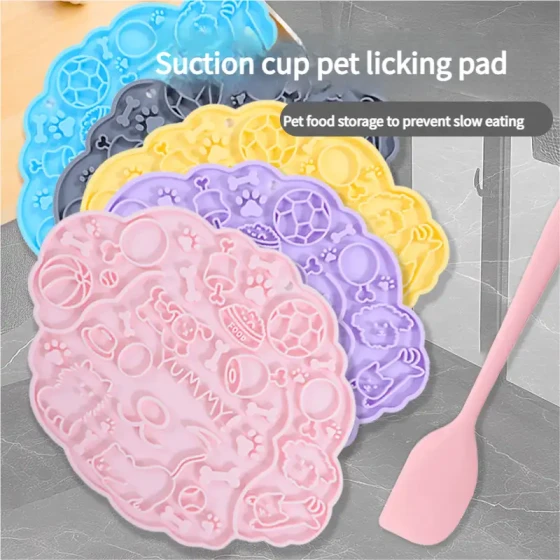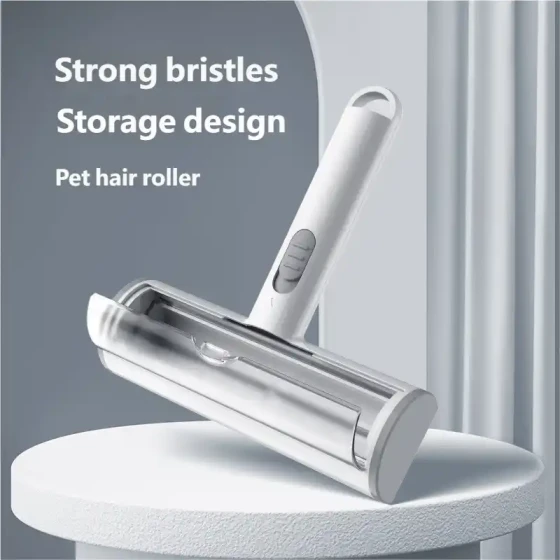How to Put Eye Drops in Cats_Steps and Tips for Correctly Administering Eye Drops to Cats
Properly administering eye drops to cats requires patience, gentleness, and some small techniques. The most important thing is to be well prepared before starting and reward the cat after applying the drops to make the whole process as smooth as possible.

Giving eye drops to a cat may be one of the challenges many cat owners face. Battling with lively, active, and highly alert cats just to put medicine in their beautiful eyes doesn't sound like an easy task. However, whether treating infections, inflammation, or for routine care, mastering the correct method of administering eye drops is crucial. This not only ensures the best effectiveness of the medicine but also reduces the cat's stress reaction, making "medicating" (even if it’s just drops) no longer a “world war” between the cat and owner.
Preparation: Sharpen your tools before chopping wood
Before officially "starting work," adequate preparation is key to success. Imagine, after finally catching your cat to put in the drops, you realize you forgot to bring the eye drops or the treats — that scene would instantly “collapse,” right? So, prepare these first:
- Medicine and instructions: Double-check whether the eye drops you need to use are correct, and carefully read the vet's prescription or the medicine instructions to understand how many drops to apply each time and how often per day. If the eye drops need shaking or refrigeration, prepare accordingly in advance.
- Clean tissues or cotton balls: Used to wipe secretions around the cat’s eyes.
- Towel or blanket: For more resistant cats, gently wrap them in a towel, commonly called a “cat burrito,” leaving only the head exposed. This effectively limits movement, preventing scratches or escape.
- Delicious treats: This is the “lubricant” and “reassurance” for the entire process. Prepare the cat’s favorite treats, such as small dried fish, freeze-dried snacks, or meat paste, as consolation and rewards.
- A quiet and familiar environment: Choose a place at home where the cat feels safe and there are few disturbances. Close doors and windows to prevent the cat from escaping when nervous.
- An assistant (if possible): If your cat resists strongly, having one person hold the cat while another administers the drops can be twice as effective.
Official procedure: Gentleness is key
Once ready, you can start giving the cat eye drops. Remember, maintain patience and gentleness throughout, calming the cat with a peaceful tone and movements.
- Approach the cat and soothe: Approach the cat in a relaxed, non-threatening way. Spend some time playing with it or gently petting it to help it relax.
- Secure the cat:
- If the cat cooperates: Let it lie on your lap or sit on a table. From behind, gently wrap an arm around to hold it.
- If the cat resists: Use the prepared towel to wrap the cat in a “burrito” style, ensuring its claws are safely tucked. Then hold the cat in your arms or place it on the table in front of you.
- Stabilize the head: Use one hand to gently support or hold the cat’s head with the face upward, but avoid bending the neck too far backward as it will be uncomfortable. Some vets suggest positioning the cat’s body vertically relative to the ground, which helps the process.
- Clean around the eyes: If there are secretions around the eyes, wipe gently with a clean tissue or cotton ball moistened with warm water.
- Apply the eye drops:
- Use the thumb and forefinger of the hand holding the head to gently open the cat’s eyelids. Some cats instinctively close their eyes — be gentle but firm.
- Hold the eye drop bottle in the other hand, with the nozzle vertically down and close to the cat's eye. Note: Do not let the nozzle touch the cat’s eye or eyelids to avoid secondary contamination or injury. Keep the nozzle about 1-2 cm from the eye.
- Drop the eye drops into the cat’s eye, usually into the conjunctival sac at the inner corner or underside of the eyelid. Follow the prescribed dosage exactly.
- Help the medicine spread: Release the eyelids, letting the cat blink naturally, or gently close the cat’s eye and massage the eyelid with your fingers to help the drops distribute evenly over the surface of the eye.
- Reward: Immediately give the cat generous treats along with verbal praise and petting so it associates eye drops with a positive experience.
Some Tips and Precautions:
- Keep the bottle nozzle clean: After each use, ensure the eye drop bottle nozzle remains clean to avoid contamination.
- Gentleness above all: Cats can sense the owner's emotions; if you are nervous or rough, cats will resist more. Stay calm and patient.
- Use the cat’s yawning moments: Sometimes when a cat yawns, its eyes open wide, which is a good moment to apply drops.
- Spread drops into multiple sessions: If multiple drops are needed, take breaks of a few minutes to let the cat rest before continuing.
- Do not forcibly press the eyeball: Be careful during operation to avoid putting pressure on surgical or damaged eyes.
- Pay attention to treatment duration: Follow the vet’s prescribed treatment course strictly; do not stop medication early even if the cat’s eyes look better.
- Observe the cat’s reactions: If the cat shows obvious pain, discomfort, or allergic reactions after applying drops, stop immediately and consult a vet.
Frequently Asked Questions
- Q: Does putting eye drops in cats hurt?
A: If done correctly, the drops go into the conjunctival sac instead of directly onto the eyeball, and the drops themselves are usually formulated by vets for cats without irritation, so it generally does not cause noticeable pain. Struggling is more due to fear of restraint and unfamiliar handling. - Q: What to do if the cat always struggles?
A: Use the towel “burrito” method to secure the cat, or ask family/friends for help. The key is to stay calm, act quickly but gently, and reward immediately after applying the drops. Some cats may need several tries to adapt. - Q: What if the eye drops accidentally get on the outside of the cat’s eye?
A: If the drops miss the eye, ensure the required dose is still administered. You can add one or two more drops inside the eye as needed. Wipe off the excess drops around the eye with a clean tissue. - Q: Can I buy eye drops for cats at a pharmacy on my own?
A: Not recommended. Cat eyes differ anatomically and in disease causes from humans. Using human eye drops arbitrarily can harm the cat or delay proper treatment. Always consult a vet and use eye drops prescribed or recommended specifically for cats. - Q: When should I take my cat to a vet?
A: If the cat’s eyes show redness, swelling, increased discharge, squinting, light sensitivity, corneal cloudiness, or signs of eye pain, take it to a vet promptly for diagnosis and professional treatment.
Summary
Administering eye drops to cats is indeed a task requiring skill and patience, but with proper preparation, the correct steps, and continual gentle soothing, most cats will gradually become accustomed. Remember, your patience and care are the best medicine to help your cat overcome fear. If you encounter difficulties or are unsure how to proceed, never force it—seeking professional help from a vet promptly is the wisest choice. They can offer expert guidance and the best solutions tailored to your cat’s specific situation.



